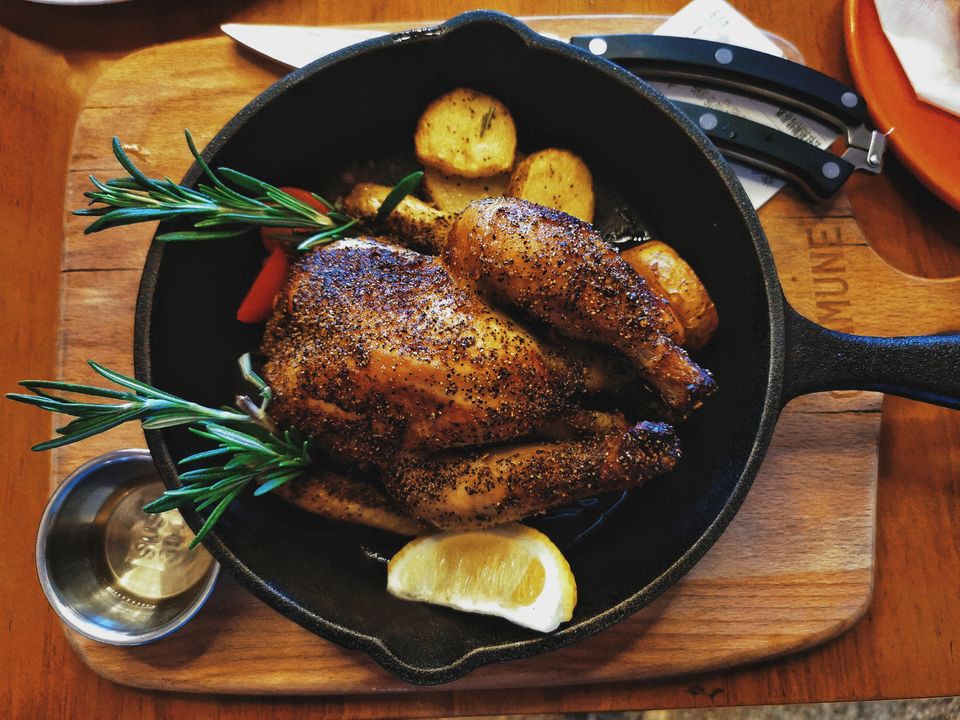The math of meat

This is all about meat and nutrition numbers. If you do not like either or both of those things, skip down to the Eat section!
It is a fact of meats that when you cook it, it loses some moisture. Whatever amount of meat you are cooking, it will weigh more before you cook it than it will after. Every once in a while, this comes up on social media or Reddit when some Clever Guy brings a kitchen scale to Buffalo Wild Wings and weighs his alleged half-pound burger patty, to reveal it weights only—dun dun dun—5.4 ounces.
Is Clever Guy being scammed? No—that burger patty weighed eight ounces before it was cooked. Meat loses between a third and a quarter of its weight during cooking. And we usually—usually—measure it before we cook it.
But. What can confound this process, for some of us, are prepared foods and food-tracking apps. We don’t cook all the food we eat ourselves. Sometimes we are trying to gauge, say, the three ounces of chicken that comes on our Sweetgreen salad. Is this three ounces of cooked chicken, or was it three ounces of raw chicken, meaning now it’s only two ounces of cooked chicken? Which number do you log? How much protein are you actually getting? Whoever made this food entry on MacroFactor or MyFitnessPal—what state of meat were they talking about? The mind reels.
We can't have bots here.
Let's see some ID. (Just your real email, please.)
